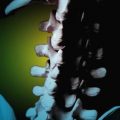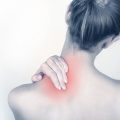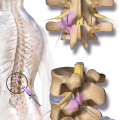Degeneration of the spine treatment
In most cases, Degenerative Disc Disease (DDD) can be treated successfully through conservative methods (non-surgical procedures). In order to manage inflammation and alleviate pain (oral or injection steroid medications), physical therapy such as massages; and exercise and specific set of stretching.
If patients still doesn’t experience significant improvement after over 6 months of treatment, then that’s the only the time when doctors will recommend surgical treatment.
Here’s what doctors often recommend for DDD patients:
Activity Modifications
The first stage of treatment of course, is to keep avoid aggravating the pain caused by DDD. This involves changing activities and daily routines, such as lifting heavy objects, playing impact sports that require back rotation such as basketball, golf, football, etc.
Aside from minimizing physical activities, doctors or physical therapists, will also teach patients how to perform simple tasks more effectively without aggravating their back, such as lifting heavy objects off the floor, set up their work space for better comfort, and the right sleep posture and positions to reduce low back pressure.
Degeneration of the Spine Treatment: Non-Surgical Treatments
Physical Therapy and Exercise
Many times, physicians will recommend physicians therapy to DDD patients. Physical therapists have the expertise and tools to administer non-surgical treatments to patients with DDD and similar conditions. Generally, they administer and/or recommend a specific exercise program that revolves around stretching and low-impact aerobic conditioning, as well as different types of massages.
Back Stretching and Strengthening Exercises
This includes exercises for dynamic lumbar stabilization where patients are taught; how to put their spine in natural position where they will feel most comfortable and keep that position.
Hamstring Stretching
Muscle soreness and tightness usually results to pain that radiates to the lower extremities of the body. Hamstring stretches releases the tension of the muscles from tightness, alleviating pain caused by degenerative disc disease.
Low-Impact Aerobic Exercises
Biking, walking, and swimming are examples of exercises that promotes mobility and strengthen the spine, without aggravating the low back pain. Also, aerobic exercises improve the body’s flow of nutrients, which is important for overall health.
Exercises also help the body release endorphins, which are the body’s natural pain killers.
Heat and Cold Treatment
Applying warm and cold compress helps ease up the stiff muscles and sore joints. Medical practitioners recommend hot compress for rigid muscles and promote joint flexibility (important for range of motion). Ice pack is helpful for alleviating pain.
Medications
Physicians can prescribe various medications for managing DDD as part of the comprehensive treatment plan.
- Anti-inflammatory and non-steroidal medications – over-the-counter medications such as naproxen, ibuprofen and COX-2 inhibitors all help in relieving pain. Many times, doctors recommend these medications to allow patients to engage in regular activities.
- Stronger Prescriptions – these are usually oral steroids, narcotic pain medication or muscle relaxants. These medications however; are only for short-term use, and some patients may benefit better in epidural steroid injections
- Epidural Steroid Injections – this medication is in a form of injection that directly provides pain relief for the lower back.
Different cases need different medications, with different side-effects to different people. This is why it is important to undergo a thorough diagnosis to discuss all the benefits, factors and risks involved.
Manual Manipulation
Spinal manipulation (chiropractic therapy) is said to provide relief for low back problems through many different. It includes relieving nerves and tissues from pressure, promote better blood flow, improving range of motion, and reduce muscle tension.
For majority of cases, doctors recommend a combination of non-surgical treatments to manage or even relieve pain and allow patients to get back to their everyday activities. For the few with severe symptoms however, surgery is an important option worth considering.






 I love to write medical education books. My books are written for everyone in an easy to read and understandable style.
I love to write medical education books. My books are written for everyone in an easy to read and understandable style.